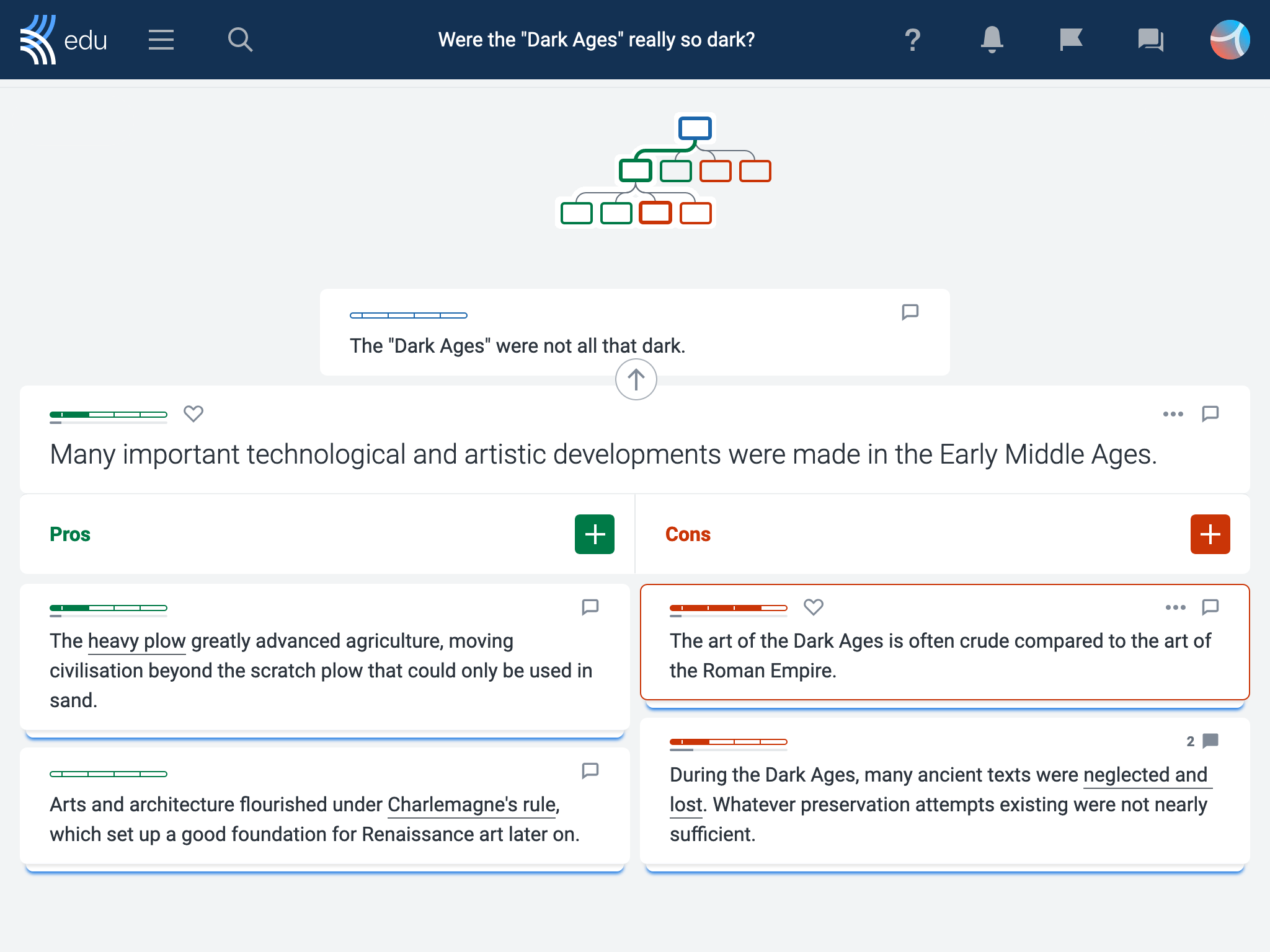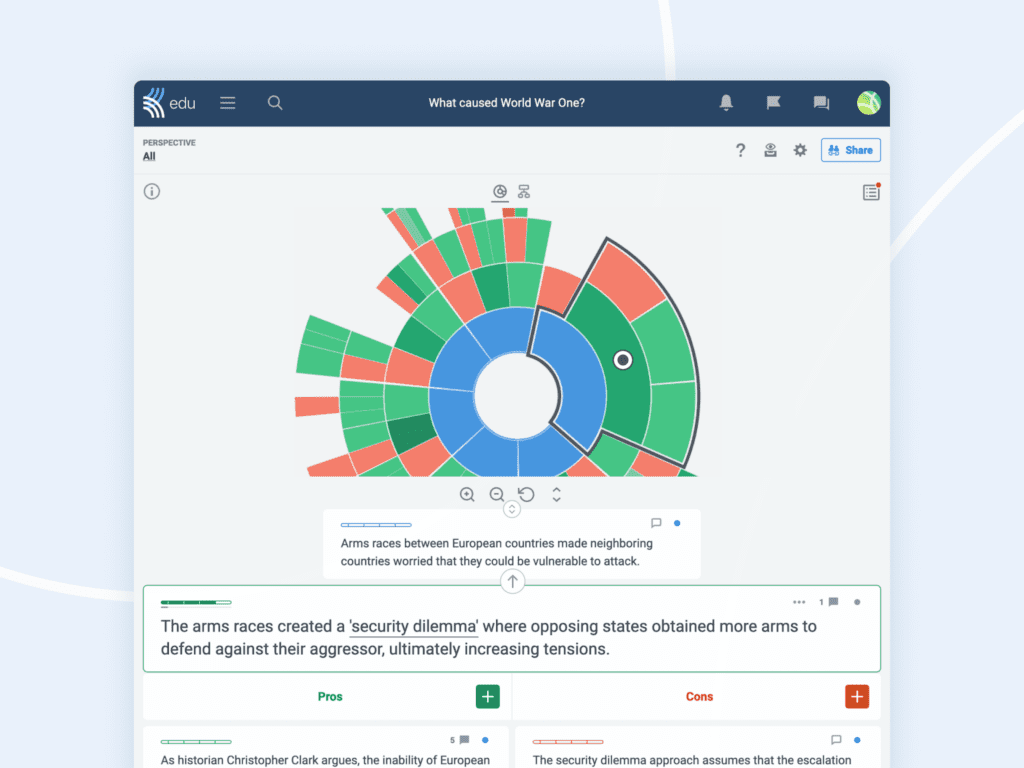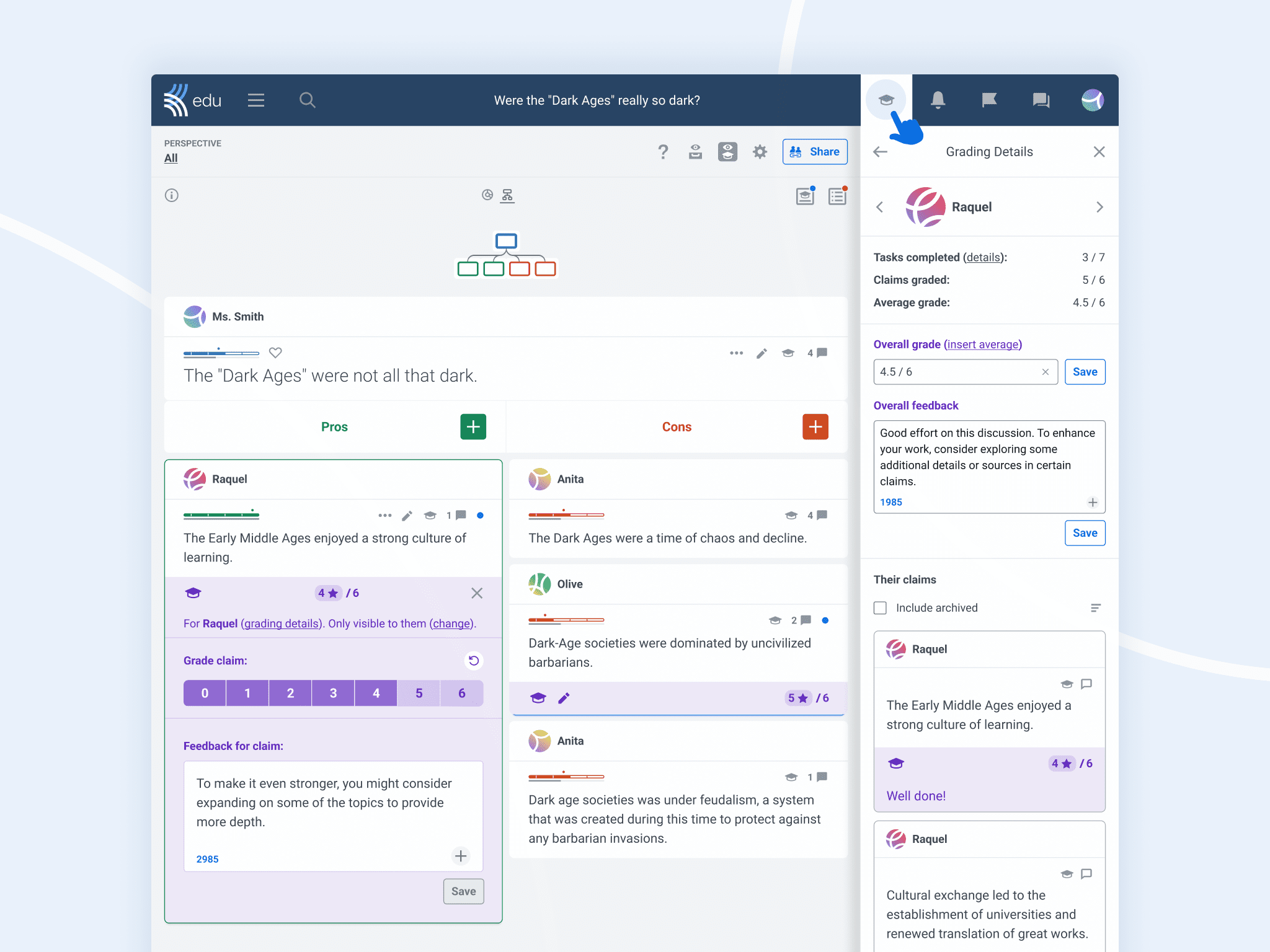When they’re effective, online discussions offer an opportunity for students to engage in meaningful dialogue and develop ideas in-depth. However, traditional, forum-style discussion boards don’t always meet these high expectations.
Let’s take a look at some of the common pitfalls of traditional discussion boards — and some strategies and alternatives to make them more enriching for students. We’ll also explore how you can use Kialo Edu as an engaging alternatives to the familiar online discussion board, completely free!
Why are traditional discussion boards challenging to use with students?
If you regularly assign online discussions to students, you’re likely familiar with some of these common challenges.
1. A lack of quality student contributions
Getting students to contribute is clearly the first challenge of facilitating worthwhile online discussions. Usually, teachers will assign a minimum number of posts to make sure that students populate the discussion.
However, this can lead to students focusing on the quantity of contributions rather than the quality. Students may end up rephrasing or merely agreeing or disagreeing with others’ contributions without furthering the discussion.
2. Not enough meaningful interaction between students
In an ideal online discussion, students have the time and space to consider and respond to their peers’ points. However, this doesn’t always happen in practice. Often, students will be eager to share their initial thoughts and disregard what has already been said by others.
They can also be timid about expressing disagreement with others’ comments for fear of seeming rude or confrontational, as it isn’t as easy to signal respectful disagreement that comes more naturally in in-person discussions.
3. Conversation threads can easily go off-topic

The format of traditional discussion boards doesn’t always make the conversation easy to follow. Students might make multiple points within a single post, which makes it difficult for other students to respond to them properly. And long, rambling threads can be hard to navigate — creating the potential for important arguments to get lost in the mix.
4. Challenging to assess
All of the previously mentioned issues with traditional discussion boards can compound to make them tricky to assess — regardless of whether you’re using them for formative or summative assessments. With larger student cohorts, tracking and grading students’ contributions can become an overwhelming task.
Strategies to improve online discussions with students
To help address some of the common challenges outlined above, here are a few strategies you can use to help students get more out of their online discussions.
1. Craft engaging prompts that keep students on track
The first step in facilitating fruitful online discussions is to design prompts that are compelling and thought-provoking with a narrow enough scope to ensure that students are all taking part in the same conversation. A well-designed prompt should be highly debatable — so that students have something to talk about!
2. Assign defined roles to students
Assigning specific roles to students can significantly enhance their engagement to ensure they remain focused on the task at hand. You could assign some students to craft questions for others to answer, with roles rotating in each discussion session.
To take this a step further, assign students different perspectives to argue from during a discussion. These could be for or against a central argument, or you could have them role-play different parties that are common to a public debate: For instance, policymakers, scientists, and business leaders during a discussion about climate policy.
Role-playing discussions like this encourage students to consider different perspectives and engage with arguments with which they may not personally agree.
3. Emphasize quality by limiting contributions

To encourage meaningful participation from students, consider asking students to post less in online discussions — while taking more care to craft their posts. Setting guidelines of one or two sentences per post can encourage students to think more carefully about what they want to say.
In cases where you’re assessing student contributions, asking students to limit their responses to one or two contributions that will be graded can foster depth over breadth in the discussion.
4. Change up the discussion format
Online discussion boards in the style of internet forums are just one way to have students collaborate and deliberate online. Reinvigorate your online discussions by changing up the format.
Consider having students annotate a key text together and then respond to each other’s comments on the text. Or, have them collaborate to create a document that will then be presented to the class.
In both of these activities, students discuss and debate ideas online in a totally different way from traditional discussion boards — which is great for building communication and critical thinking skills.
Another innovative way of conducting online discussions is in the form of interactive argument maps which students create collaboratively. Read on to see how Kialo discussions can benefit students!
Use Kialo Edu as an alternative online discussion platform for students
Kialo Edu is designed to facilitate focused, meaningful online discussions between students — and address some of the common limitations of traditional discussion boards. Let’s take a closer look at how Kialo Edu is one of the best ways for students to learn through discussion.
1. Students are encouraged to create concise and precise contributions

In Kialo discussions, each student contribution is designed to be a clear, standalone claim, supporting or weakening the claim above it. This encourages students to articulate their thoughts with precision, allowing for a separation of ideas into distinct, focused arguments.
2. Intuitive structure for students to follow the discussion

Kialo discussions branch out from a central thesis along chains of reasoning. Unlike traditional discussion threads, it’s always clear how ideas are connected — and which point is being responded to. This makes Kialo discussions both easy to navigate and easier to follow.
3. Kialo discussions are adaptable to different activities to train specific skills
At its heart, Kialo discussions are interactive argument maps. How you assign students to use them is up to you. They can participate in small group discussions to maximize participation, or even build out discussions individually to develop their ideas before taking part in a whole-class discussion.

To keep students focused, you can assign them Tasks to practice particular skills, like responding to others or adding supporting sources to their arguments.
4. Student contributions in Kialo discussions are easy to track and grade

In Kialo discussions, you can cycle through student claims to see their individual contributions. Furthermore, you can easily deliver targeted feedback or grade each claim using our dedicated Grading feature. It’s never been easier to keep track of student progress in online discussions — or identify gaps in their knowledge!
If you’ve got more ideas about alternatives to traditional discussion boards, or strategies to maximize participation in online discussions, we’d love to hear from you! Get in touch on any of our social media platforms, or contact us directly at feedback@kialo-edu.com.

